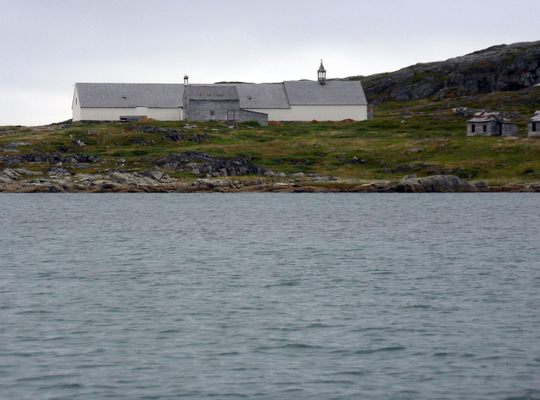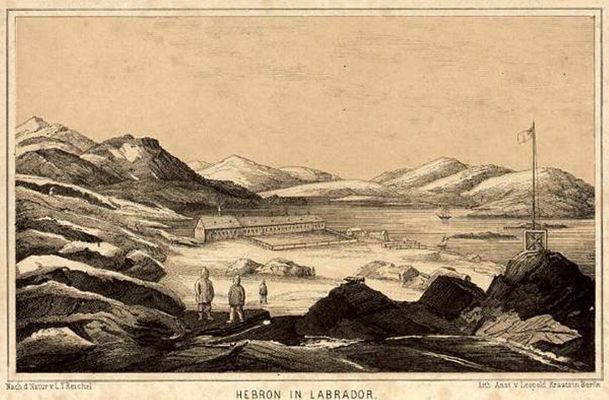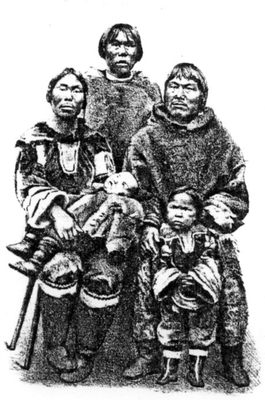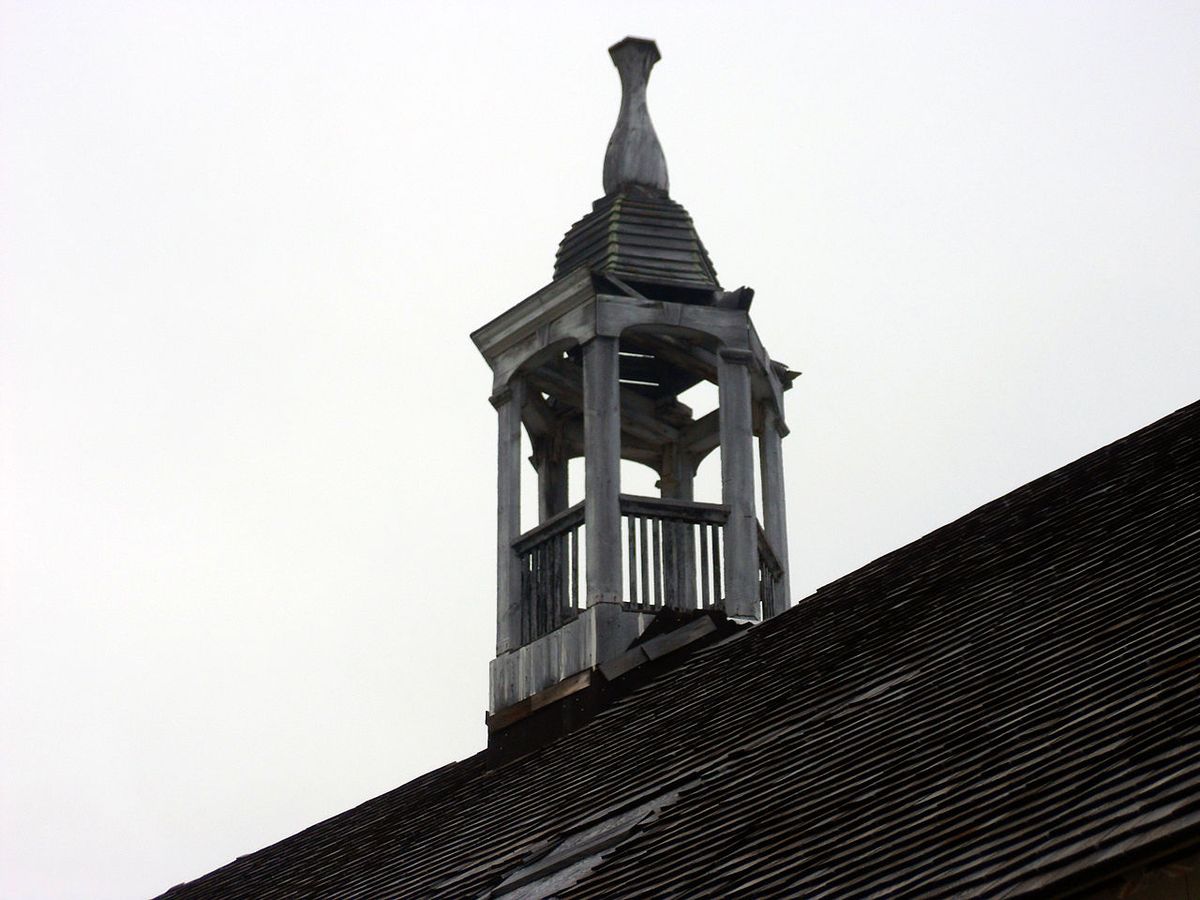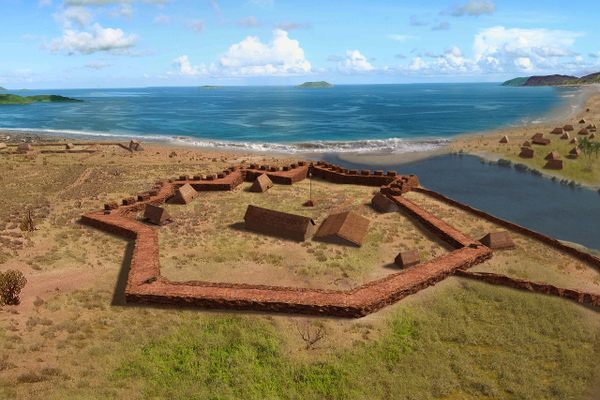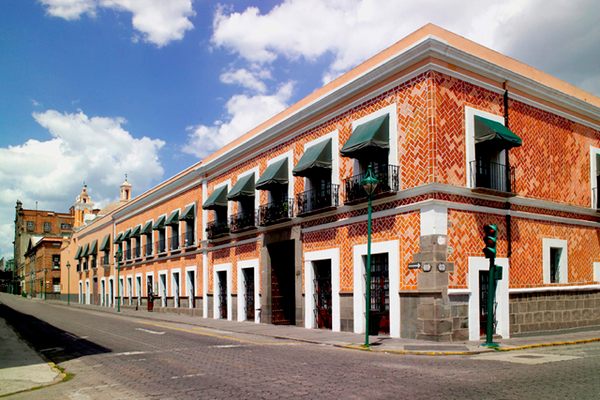About
In 1831, German Moravian missionaries founded a small settlement in northern Labrador. They sought to evangelize the Inuit people of this harsh but beautiful region, a process that had begun with other missions in Labrador since 1771. But while Christianity did take root in the local communities, death, abandonment and traumatic relocations were soon to follow.
The Hebron settlement consisted of a series of often interconnected buildings, including a church, mission house, store, forge, and carpenter’s shop. The architectural style was typically Germanic, most notably in the long main building with its steep, elongated roof, dormer windows, and distinctly European cupola.
As well as providing religious instruction to the local Inuit, the Hebron mission served as a commercial, educational, and medical center. The latter, ironically perhaps, became a key part of the settlement, which was frequently ravaged by outbreaks of whooping cough, influenza, smallpox, and other diseases brought by the missionaries, against which the Inuit often had no natural immunity and had not been vaccinated.
The worst outbreak came in 1918, when an epidemic of Spanish flu wiped out a third of the Inuit population of Labrador, which had previously numbered around 1,200. The effects of this outbreak can still be seen in the Inuit cemetery at Hebron, where many of the dead were laid to rest that year in the aftermath of the epidemic.
Another group of Hebron locals died from smallpox while traveling in Europe in 1880 as part of an ethnographic show, or human zoo. Abraham Ulrikab volunteered to travel to Europe with his family and some friends to escape the hardships they faced in Hebron. Tragically, he and his entire family died one by one from smallpox, all within the space of a month, and by January 16, 1881, all eight of the Inuit who left Hebron had died.
By the mid-1950s, concerns about poor living conditions, tuberculosis, and a shortage of firewood at the Hebron mission were raising doubts about its future. The settlement officially closed in 1959, including the store and medical center, leaving the Inuit who had settled there to fend for themselves. A mass relocation of Hebron residents took place, mainly to communities farther south in Nunatsiavut.
For the Inuit residents of Hebron, it was a mighty shock. They had been largely abandoned, and their relocation was a traumatic process. Families were separated, promises of housing elsewhere were not always fulfilled, and people were sent to unfamiliar settlements were they had no knowledge of the local environment and hunting grounds, in some cases plunging them into poverty.
Following its abandonment, Hebron soon fell into decline. It was designated a National Historic Site of Canada in 1976, which protected some of the main buildings from collapsing completely. In more recent years, ongoing restoration projects have helped restore much of the main building and some of the outbuildings.
In August 2009, the provincial government unveiled a monument at the Hebron archaeological site officially apologizing for the closure of the mission and the relocation of its Inuit inhabitants. Not long after, Inuit leaders placed a second plaque at the site, inscribed with their acceptance of the apology.
Related Tags
Know Before You Go
The Hebron Mission archaeological site is located along the north coast of Labrador, within the Canadian province of Newfoundland and Labrador. The site is about 120 miles north of Nain, the largest community in the region. Nain can be reached by air or sea, either via Air Labrador or the coastal ferry. Custom tours to Hebron can be arranged in Nain, from where visitors can travel to Hebron by boat or helicopter. Cruise ships in the area also frequently include a stop at the site.
Published
September 17, 2019
Sources
- https://www.historicplaces.ca/en/rep-reg/place-lieu.aspx?id=9620&pid=0
- https://www.tourismnunatsiavut.com/home/national_historic_sites.htm
- https://www.cbc.ca/news/canada/newfoundland-labrador/restoration-continues-on-1831-church-in-hebron-labrador-1.3205487
- https://www.sednaepic.com/visit-deserted-outpost-hebron-labrador
- https://www.releases.gov.nl.ca/releases/2009/laa/0810n07.htm
- http://www.c-and-e-museum.org/Pinetreeline/other/other34/other34bb.html

